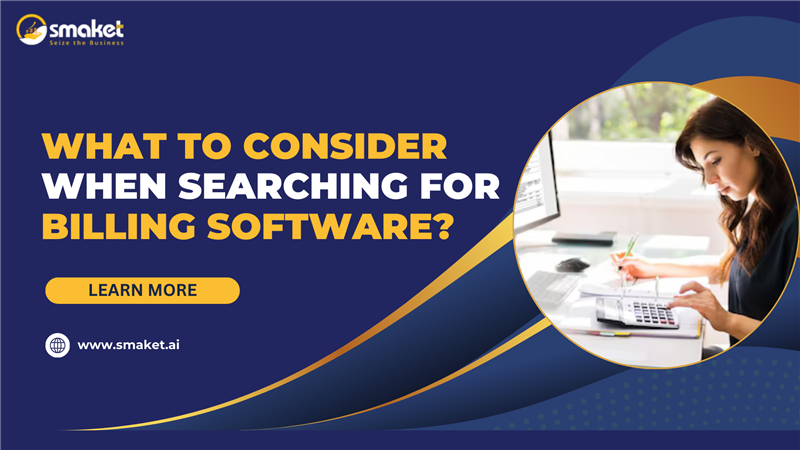In today’s digital age, manual billing and handwritten invoices are becoming a thing of the past. Whether you’re a small business owner, freelancer, or managing a growing enterprise, choosing the right Billing Software is a key step in running your operations efficiently.
But with so many available tools, how do you know which is right for your business?
Here’s a complete guide to help you evaluate and choose the best billing software based on your needs.
1. Understand Your Business Requirements
Before exploring features or pricing, take a moment to define what you need:
- Do you need to issue GST or VAT-compliant invoices?
- Are you looking for a cloud-based billing solution?
- Do you require multi-user access or integration with inventory?
- Is mobile access important?
Knowing your core requirements will help you avoid bloated software with features you don’t need, or worse, choosing one without essential tools.
2. User-Friendly Interface
Ease of use is critical. The software should have:
- A clean, intuitive dashboard
- Simple invoice creation and editing
- A minimal learning curve
Even powerful software loses value if it’s too complex for everyday use. Look for a platform that’s easy for you and your team to adopt quickly.
3. Invoicing Features
Good billing software should go beyond basic templates. Look for:
- Customizable invoice formats
- Recurring invoices
- Automatic payment reminders
- Multiple currency support
- Branded invoices (with your logo and business details)
These features save time, reduce errors, and improve your brand’s professional image.
4. Tax and Compliance Support
If you’re operating in a region where tax regulations like GST, VAT, or TDS apply, your billing software should:
- Automatically apply correct tax rates
- Generate tax reports
- Stay updated with legal changes
This ensures compliance and saves hours of manual calculations during tax filing periods.
5. Integration with Other Tools
Your billing system doesn’t exist in isolation. Look for billing software that can integrate with:
- Accounting software (e.g., QuickBooks, Zoho Books)
- Inventory or POS systems
- Payment gateways (UPI, credit cards, PayPal)
- CRM tools
Integration ensures smooth data flow and reduces the chances of human error.
6. Cloud Access and Data Security
With businesses becoming more mobile, cloud-based billing software offers major advantages:
- Access from any device, anywhere
- Real-time data syncing
- Automatic backups
- Role-based permissions for added security
Make sure the software uses strong encryption and data protection practices.
7. Reporting and Analytics
Good billing software isn’t just about invoices — it should help you track the financial health of your business. Useful reports include:
- Sales summaries
- Outstanding payments
- Customer-wise revenue
- Tax summaries
Analytics provide valuable insight and help you make informed business decisions.
8. Customer Support and Documentation
Support matters, especially when you’re dealing with money and legal documents. Choose software that offers:
- Responsive email or chat support
- Step-by-step guides or video tutorials
- A knowledge base or FAQ section
Reliable support ensures you’re not stuck when something goes wrong.
9. Pricing and Scalability
Finally, choose billing software that fits your budget and can grow with your business. Consider:
- Transparent pricing (no hidden charges)
- Free trials or demo versions
- Upgrade options as your business grows
Avoid choosing based on price alone; focus on value for money.
Conclusion
The right Billing Software can save time, reduce errors, and help you get paid faster. By focusing on features that align with your business needs, such as ease of use, tax compliance, integration, and reporting, you’ll be better equipped to make an informed decision.
Before committing, always try out a demo or free version. This hands-on experience will help you understand whether the software is a good fit for your workflow.

